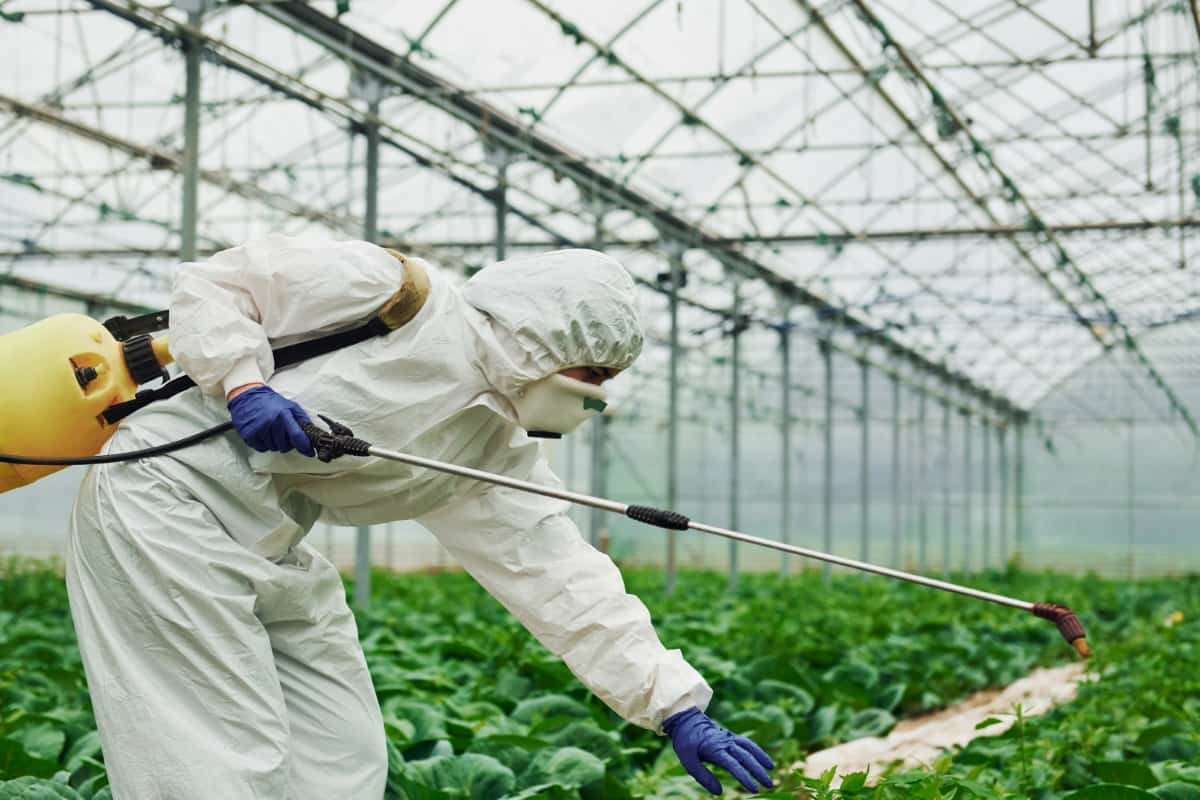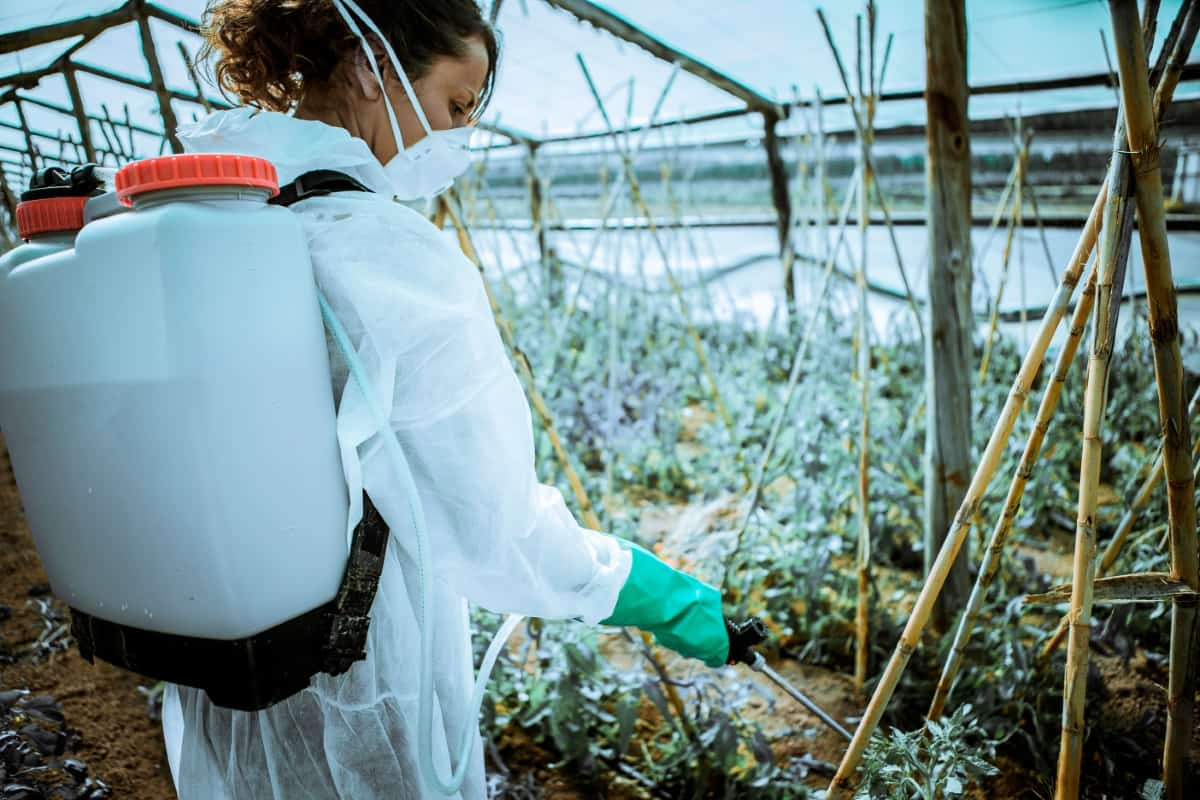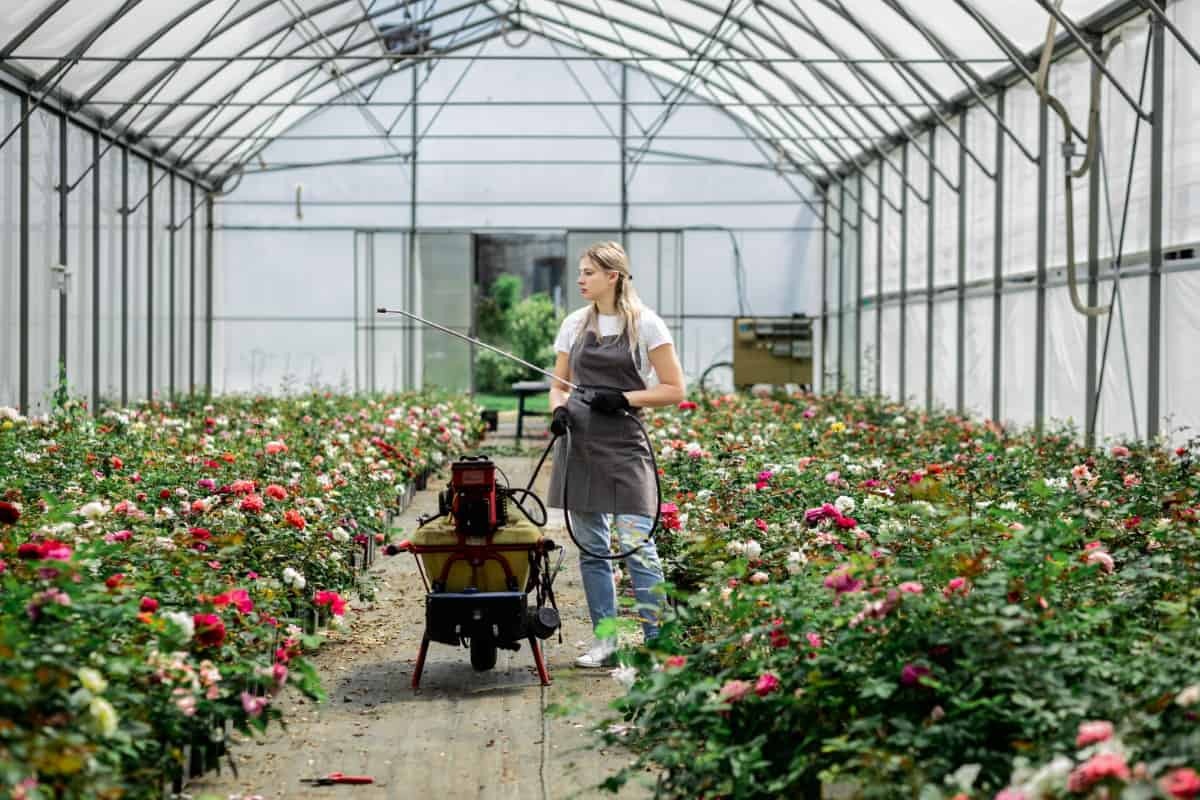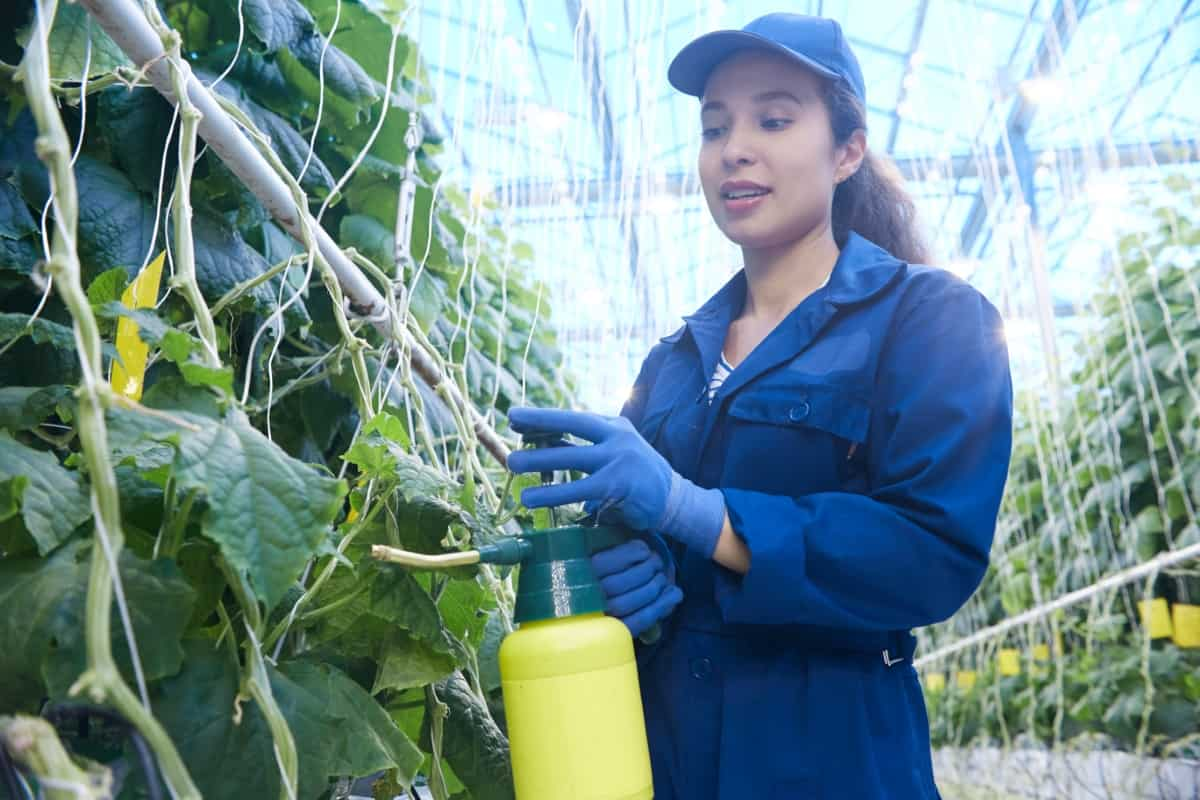Sevin Dust is a popular insecticide for greenhouse pest control. This guide provides essential information on when and how to effectively apply Sevin Dust to safeguard your greenhouse plants. As a versatile and potent solution, Sevin Dust offers protection against various pests, ensuring the health and vitality of your plants.

By following the recommended application methods and timing, you can optimize its efficacy and minimize potential harm to your greenhouse ecosystem. Read on to learn the key steps in utilizing Sevin Dust for successful pest management in your greenhouse.
Using Sevin Dust for Pest Control in Greenhouse
Composition and Mechanism of Sevin Dust for Effective Greenhouse Pest Control
Sevin dust composition for greenhouse pest control contains the active ingredient carbaryl. This chemical compound acts as a broad-spectrum insecticide, disrupting the nervous system of pests upon contact. Carbaryl inhibits acetylcholinesterase, an enzyme crucial for proper nerve signal transmission in insects, leading to paralysis and eventual death. Sevin Dust is formulated as a fine powder, enhancing its adherence to plant surfaces and increasing its effectiveness against crawling insects such as mites, beetles, and caterpillars.
The dust formulation facilitates easy application and ensures thorough coverage of treated areas. This mechanism makes Sevin Dust particularly effective for pest control in greenhouses, creating a barrier that deters and eliminates a wide range of pests. Careful Sevin dust application in greenhouses, following recommended guidelines, helps maximize its impact while minimizing potential risks to non-target organisms and the greenhouse environment.
How to Properly Apply Sevin Dust in Greenhouse Environment
- Begin by identifying the specific pests in your greenhouse. Apply Sevin Dust early in the morning or late in the afternoon to minimize exposure to beneficial insects.
- Prioritize safety by wearing protective gear, including gloves, a mask, and long sleeves, during application to avoid skin contact or inhalation.
- Apply Sevin Dust evenly across the plant surfaces, focusing on the undersides of leaves where many pests reside. Use a hand duster for precise application and better coverage.
- Follow the recommended dosage to prevent overdosing, which can harm plants and impact the overall greenhouse ecosystem.
- Regularly monitor treated areas for signs of pests and reapply as necessary.
- Avoid applying Sevin Dust on windy days to prevent drift, and refrain from application if rain is expected within 24 hours to maintain effectiveness.
Common Greenhouse Pests Targeted by Sevin Dust Insect Killer: Pests in Greenhouses Treated with Sevin Dust
- Aphids: Sevin Dust effectively controls aphids, small sap-sucking insects that weaken plants.
- Spider Mites: These microscopic pests can be combated with Sevin Dust, which disrupts their nervous system upon contact.
- Whiteflies: Sevin Dust acts as a potent solution against whiteflies, preventing them from damaging greenhouse plants.
- Beetles: Various beetle species, including cucumber beetles and Colorado potato beetles, are effectively managed with Sevin Dust, offering protection to crops.
- Caterpillars: Sevin Dust is particularly useful in controlling caterpillar infestations safeguarding plants from their voracious feeding habits.
Safety Measures: Protecting Yourself and Plants when Using Sevin Dust in a Greenhouse
- When using Sevin dust application in a controlled environment, prioritizing safety is paramount. Wear protective gear such as hand gloves, a face mask, and long sleeves to minimize skin contact and inhalation risks.
- Apply the insecticide early in the morning or late afternoon to reduce exposure to beneficial insects.
- Ensure even distribution of the dust, focusing on the undersides of foliage where pests often reside.
- Avoid overuse by following recommended dosages, as excessive application may harm both plants and the environment.
- Weather conditions matter; refrain from applying Sevin Dust on windy days to prevent drift, and withhold application if rain is expected within 24 hours for optimal effectiveness.
- Adhering to these safety measures safeguards both yourself and your greenhouse plants during Sevin Dust application.
In case you missed it: Pest Management in Terrace Gardens: Methods to Control Pests in Your Terrace Garden

The Right Timing: When to Apply Sevin Dust for Maximum Effectiveness Against Greenhouse Pests
Achieving maximum effectiveness in greenhouse pest control requires optimal timing for Sevin dust application against greenhouse pests. Apply Sevin Dust early in the morning or late afternoon when temperatures are milder and beneficial insects are less active, minimizing their exposure.
This allows the insecticide to target pests without harming helpful organisms. Timing is crucial during the pest life cycle, targeting larvae or nymph stages for enhanced efficacy. Regular monitoring for pest presence and weather conditions, such as avoiding application on windy days or imminent rain, ensures optimal results.
Dos and Don’ts: Best Practices for Using Sevin Dust in Greenhouse Environments
Do’s
- Wear protective gear, including hand gloves, a face mask, and long sleeves, during Sevin dust treatment for greenhouse flowers, vegetables, etc.
- Follow recommended dosages to prevent overuse and potential harm to plants.
- Apply early in the morning or late afternoon for optimal results, targeting pests during their vulnerable stages.
- Use a hand duster for even distribution, focusing on the undersides of leaves.
- Monitor treated areas regularly and reapply as needed based on pest presence.
- Adhere strictly to safety guidelines and weather considerations, avoiding application on windy days or before imminent rain.
Don’ts
- Avoid applying Sevin Dust in excessive amounts, as it may harm plants and the environment.
- Refrain from applying during peak temperatures or when beneficial insects are active.
- Do not neglect protective gear, risking exposure to the insecticide.
- Avoid application on windy periods to prevent drift and minimize off-target effects.
Impact of Sevin Dust on Greenhouse Ecosystems
Its broad-spectrum nature may also affect beneficial insects, disrupting the natural balance within the greenhouse environment. While Sevin Dust is relatively non-persistent in the environment, overuse or improper Sevin dust application in a controlled environment can lead to unintended consequences, potentially harming non-target species and affecting overall ecosystem health.
In case you missed it: Pest Management in Balcony Gardens: Methods to Control Pests in Your Balcony

Therefore, responsible and targeted application, along with adherence to recommended guidelines, is crucial to minimizing adverse impacts and maintaining a balanced and sustainable greenhouse ecosystem.
Integrating Sevin Dust into an Integrated Pest Management (IPM) Plan for Greenhouses
Begin by thoroughly assessing the greenhouse environment, identifying specific pests, and monitoring their populations regularly. Implement preventive measures, such as maintaining proper sanitation and employing biological controls like predatory insects to reduce reliance on chemical interventions.
When Sevin dust application in a controlled environment, use it selectively and consider its potential impact on non-target organisms. Timing is crucial; apply Sevin Dust during the vulnerable stages of pests and when beneficial insects are less active. By combining Sevin Dust with other IPM strategies, growers can optimize its efficacy while minimizing environmental impact.
Troubleshooting Common Issues when Using Sevin Dust in Greenhouses
- If insufficient pest control is observed, reassess the timing and frequency of application, ensuring it aligns with the pest life cycle.
- Uneven distribution may occur, so use a hand duster for precise coverage, focusing on the undersides of leaves where pests often reside.
- If plant damage or discoloration appears after application, it may indicate overuse; adhere strictly to recommended dosages.
- Ineffectiveness can result from adverse weather conditions like rain or wind; avoid application during these periods.
- If non-target species are affected, consider refining the application method or exploring alternative pest control measures within an Integrated Pest Management (IPM) framework.
- Regular monitoring and adjustment based on observed issues contribute to a more successful and environmentally responsible use of Sevin Dust in greenhouse pest management.
In case you missed it: Common Insect Pests of Fruit Crops in the Midwest and Management Practices

Conclusion
In conclusion, mastering the Sevin Dust application in a greenhouse for pest control is vital for optimal results. This guide has outlined the importance of timing, proper protective measures, and adherence to recommended dosages. By understanding the composition, mechanism, and potential impacts, growers can integrate Sevin Dust effectively into their pest management strategies, ensuring a healthy greenhouse environment while safeguarding plants from common pests.
- Feed Your Flock for Less: Top 10 Tips to Save on Chicken Feed
- Ultimate Guide to Ossabaw Island Hog: Breeding, Raising, Diet, and Care
- Hatching Answers: The Top 10 Reasons Your Chickens Aren’t Laying Eggs
- Eggs and Economics: Breaking Down the Cost of Raising Backyard Chickens
- Defend Your Greens: Proven Methods to Keep Iguanas Out of Your Garden
- Ultimate Guide to Cinnamon Queen Chicken: A Comprehensive Guide for Beginners
- Ultimate Guide to California Tan Chicken: Breeding, Raising, Diet, Egg-Production and Care
- Ultimate Guide to Marsh Daisy Chicken: Breeding, Raising, Diet, and Care
- 10 Types of Chicken Farming Businesses You Can Start for Profits